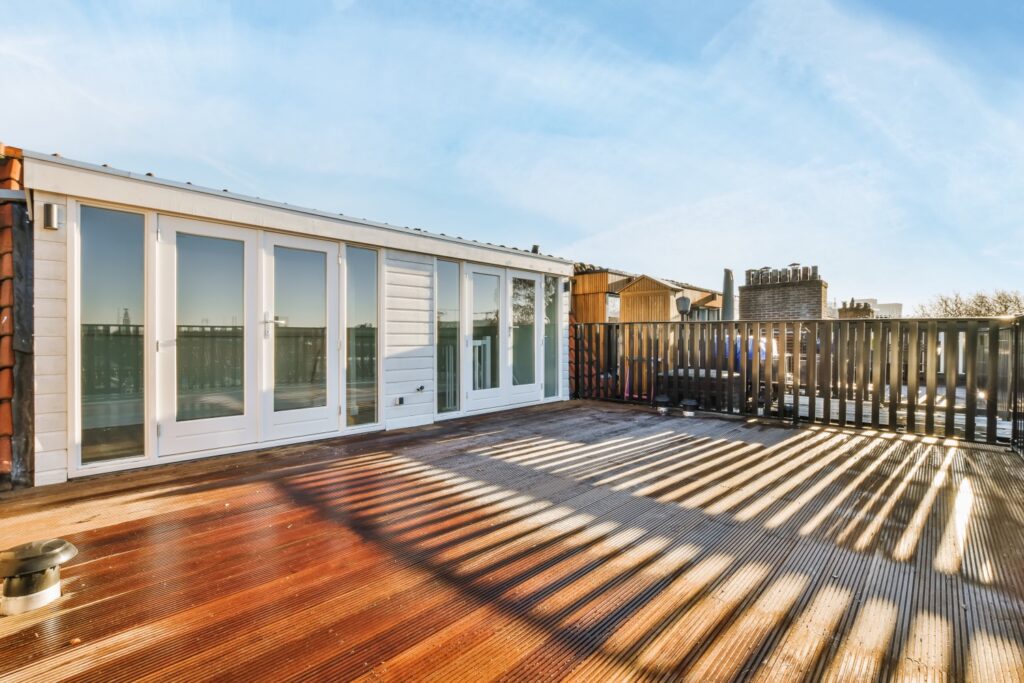Choosing the right decking material is a critical decision for homeowners looking to enhance their outdoor spaces. With options like wood and composite decking, each offers unique benefits and challenges. This blog compares wood vs. composite decking, exploring the pros and cons, maintenance needs, climate considerations, and return on investment to help you select the best decking materials for your home in 2025.
The Pros and Cons of Each Material
Wood Decking
- Pros:
- Natural beauty and authentic aesthetic, with species like cedar, redwood, or pressure-treated pine offering distinct looks.
- Lower upfront cost compared to composite, making it budget-friendly.
- Easy to customize with stains or paints for a personalized design.
- Cons:
- Requires regular maintenance, including sealing, staining, and cleaning to prevent rot and weathering.
- Susceptible to splintering, warping, and insect damage over time.
- Shorter lifespan (10-20 years, depending on care and climate).
Composite Decking
- Pros:
- Low-maintenance decks that resist fading, staining, and mold without needing frequent upkeep.
- Durable, with lifespans of 25-50 years and warranties often covering decades.
- Eco-friendly options made from recycled plastics and wood fibers.
- Cons:
- Higher initial cost, often 2-3 times more expensive than wood.
- Can feel less natural and may get hotter under direct sunlight.
- Limited color customization compared to wood’s staining flexibility.
Maintenance Requirements and Long-Term Costs
Wood decking demands consistent upkeep to maintain its appearance and structural integrity. Homeowners should plan to clean, sand, and reapply sealant or stain every 1-3 years, costing $500-$1,500 per treatment depending on deck size and labor. Neglecting maintenance can lead to costly repairs or premature replacement. Composite decking, however, is designed for minimal upkeep. Occasional cleaning with soap and water is typically sufficient, with no need for staining or sealing. While composite’s upfront cost is higher (around $30-$60 per square foot vs. $15-$25 for wood), its low-maintenance nature and durability often result in lower long-term costs.
How Climate Affects Your Deck Material Choice
Climate plays a significant role in deck performance, especially in regions with extreme weather. In areas with high humidity or heavy rainfall, wood decks are prone to rot, mold, and warping unless meticulously maintained. Composite decking excels in these conditions, resisting moisture and temperature fluctuations. In hot, sunny climates, composite can absorb more heat, potentially becoming uncomfortable underfoot, though newer models with cooling technology mitigate this. For colder regions with freeze-thaw cycles, composite’s stability prevents cracking, while wood may split or weaken. Consider your local climate when choosing to ensure durability and comfort.
Which Material Offers the Best Return on Investment?
Both materials can boost your home’s value, but composite decking often provides a better return on investment (ROI). According to the 2024 Cost vs. Value Report, a composite deck recoups about 65-70% of its cost at resale, compared to 60-65% for wood. Composite’s longevity and low-maintenance appeal attract buyers, especially in competitive markets. Wood decks, while initially cheaper, may require repairs or refinishing before selling, reducing ROI. For homeowners prioritizing long-term value and minimal upkeep, composite is typically the smarter investment, while wood suits those who value aesthetics and are committed to maintenance.
Create Your Perfect Outdoor Space
Choosing between wood vs. composite decking depends on your budget, aesthetic preferences, and willingness to maintain your deck. Both offer unique advantages, but understanding their pros, cons, and suitability for your climate ensures you make the right choice for 2025. Not sure which decking material is best for your home? Contact Tennessee Deck and Fence for expert guidance! Call us for details and ask about financing options 865-304-0955.

